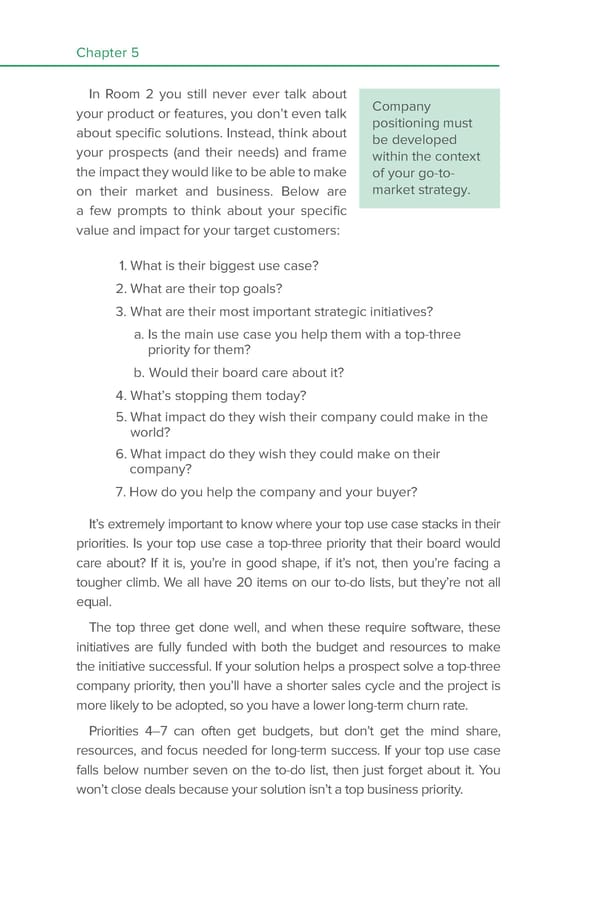Chapter 5 Nailing Your Go-to-Market Positioning In Room 2 you still never ever talk about your product or features, you don’t even talk Company about specific solutions. Instead, think about positioning must be developed your prospects (and their needs) and frame within the context the impact they would like to be able to make of your go-to- on their market and business. Below are market strategy. a few prompts to think about your specific value and impact for your target customers: 1. What is their biggest use case? 2. What are their top goals? 3. What are their most important strategic initiatives? a. Is the main use case you help them with a top-three priority for them? b. Would their board care about it? 4. What’s stopping them today? 5. What impact do they wish their company could make in the world? 6. What impact do they wish they could make on their company? 7. How do you help the company and your buyer? It’s extremely important to know where your top use case stacks in their priorities. Is your top use case a top-three priority that their board would care about? If it is, you’re in good shape, if it’s not, then you’re facing a tougher climb. We all have 20 items on our to-do lists, but they’re not all equal. The top three get done well, and when these require software, these initiatives are fully funded with both the budget and resources to make the initiative successful. If your solution helps a prospect solve a top-three company priority, then you’ll have a shorter sales cycle and the project is more likely to be adopted, so you have a lower long-term churn rate. Priorities 4–7 can often get budgets, but don’t get the mind share, resources, and focus needed for long-term success. If your top use case falls below number seven on the to-do list, then just forget about it. You won’t close deals because your solution isn’t a top business priority.
 Nailing Your Go-to-Market Positioning Page 8 Page 10
Nailing Your Go-to-Market Positioning Page 8 Page 10